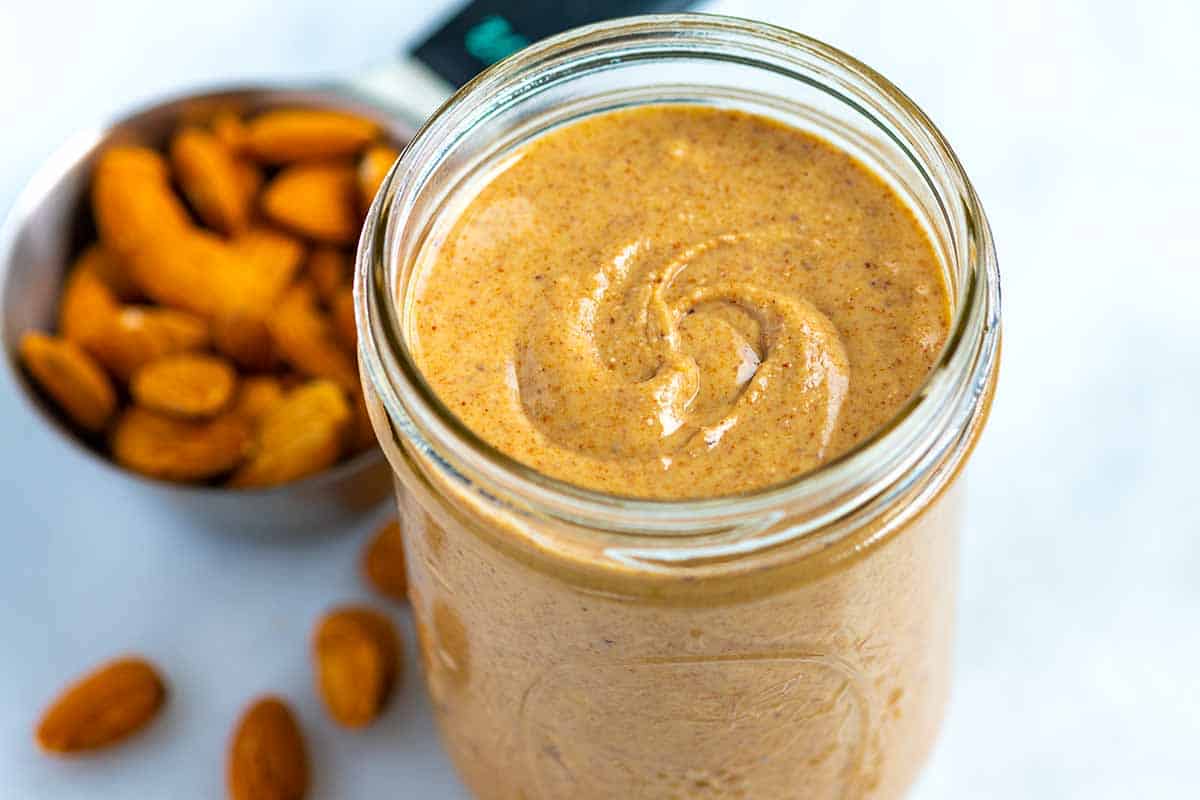
Have you ever started baking and realized you’re out of almond extract? Don’t worry, you’re not alone!
Almond extract is a key ingredient in many recipes, adding a sweet, nutty flavor that enhances cakes, cookies, and more. But what happens when you don’t have any on hand?
Luckily, plenty of substitutes can give your dish a delicious twist without losing the essence almond extract brings.
From vanilla extract to citrus zests, each alternative offers a unique flavor while complementing your recipes.
In this blog, we’ll explore 15 easy-to-use substitutes for almond extract in the kitchen.
These will ensure that your desserts and dishes turn out just as flavorful, even without the original ingredient.
What are Some of the Best Substitutes for Almond Extract?
1. Vanilla Extract

Vanilla extract is one of the most common substitutes for almond extract. While it doesn’t have the nutty flavor, its sweet and aromatic profile makes it a versatile option in many recipes.
- How It Compares: Vanilla is sweeter and milder compared to almond extract. It lacks the nutty taste but provides a warm, familiar flavor that works well in various dishes.
- Best Uses in Recipes: Vanilla extract works best in baked goods like cookies, cakes, and frostings. It also complements ice creams, puddings, and some savory dishes that require a hint of sweetness.
- How Much to Use: Use vanilla extract in a 1:1 ratio to substitute almond extract. Since the flavor is milder, you may want to add more if desired.
- Additional Tips: Vanilla blends well with other spices like cinnamon or nutmeg. It’s also a good choice for recipes with other strong flavors, allowing the dish to retain its character.
2. Maple Syrup

Maple syrup brings a rich, warm sweetness that can replace almond extract in many recipes, though it offers a distinct, non-nutty flavor.
- How It Compares: Maple syrup is sweeter than almond extract and adds a deep, caramel-like flavor. It doesn’t have the same nutty essence but adds complexity to dishes.
- Best Uses in Recipes: Maple syrup is great in baked goods like cookies, cakes, and muffins. It also works well in sauces and glazes for meats or vegetables.
- How Much to Use: Substitute maple syrup at a 1:1 ratio for almond extract, but be mindful of the additional sweetness. You might want to reduce other sugar components in the recipe slightly.
- Additional Tips: Maple syrup works especially well in recipes with rich, earthy sweetness. It’s ideal for autumnal dishes or anything with caramel-like flavors.
3. Coconut Extract

Coconut extract brings a light, tropical flavor that complements many desserts. It’s a fun twist if you want something sweet but not nutty.
- How It Compares: Coconut extract is sweet and tropical, quite different from almond extract’s nutty flavor. However, its mildness makes it a good alternative in many dessert recipes.
- Best Uses in Recipes: Coconut extract works well in cakes, cookies, and frostings. It’s particularly good in tropical-themed desserts or anything that pairs well with fruit flavors.
- How Much to Use: Use coconut extract in a 1:1 ratio to replace almond extract. However, you may want to reduce other sweeteners slightly due to its sweetness.
- Additional Tips: Coconut extract pairs wonderfully with flavors like pineapple, mango, and chocolate. It can also add an interesting twist to otherwise traditional recipes.
4. Amaretto

Amaretto is an almond-flavored liqueur, making it one of the closest substitutes for almond extract. Its nutty, sweet flavor enhances desserts and some savory dishes.
- How It Compares: Amaretto mimics almond extract’s flavor quite well, though due to its alcohol content and additional sweetness, it has a more complex profile.
- Best Uses in Recipes: Amaretto works best in baked goods, frostings, and sauces. It can also be used in cocktails and desserts like tiramisu or biscotti.
- How Much to Use: Use amaretto at a 4:1 ratio to almond extract, meaning you’ll need four times the amount to achieve a similar flavor. Be mindful of the added liquid content.
- Additional Tips: Amaretto adds flavor and sweetness, so you may need to reduce other sweeteners in your recipe. It pairs well with chocolate and coffee-based desserts.
5. Ground Almonds
Ground almonds can replace almond extract when you want to retain the nutty flavor in a more subtle form. They add texture as well as taste.
- How It Compares: While ground almonds don’t provide the same concentrated flavor as almond extract, they offer a natural, nutty taste that can work well in baked goods.
- Best Uses in Recipes: Ground almonds work best in cakes, cookies, and pie crusts, where the texture and nutty flavor complement the dish. They also add richness to batters and fillings.
- How Much to Use: Use a tablespoon of ground almonds instead of a teaspoon of almond extract. This ratio ensures you get a noticeable almond flavor in the dish.
- Additional Tips: Ground almonds add texture, so they work best in recipes with a slight crunch. They can also help thicken batters or fillings.
6. Almond Butter

Almond butter provides a rich, nutty flavor and works well as a substitute in recipes where texture isn’t an issue. It’s ideal for adding depth to dishes.
- How It Compares: Almond butter has a much stronger, more pronounced almond flavor than almond extract, but it will change the texture of your dish.
- Best Uses in Recipes: Almond butter works well in cookies, brownies, and sauces. It’s also a good addition to smoothies, adding flavor and creaminess.
- How Much to Use: Substitute a teaspoon of almond extract with a tablespoon of almond butter. Since it’s thicker, you may need to adjust the liquids in your recipe.
- Additional Tips: Almond butter can add richness to recipes, but the added fat content must be considered. It pairs well with chocolate and honey.
7. Marzipan

Marzipan, a sweet almond paste, can add a mild almond flavor to desserts and some savory dishes. It’s ideal when you want a sweet, nutty kick.
- How It Compares: Marzipan offers a much milder almond flavor than extract and adds sweetness to the dish, making it an ideal ingredient for certain desserts.
- Best Uses in Recipes: Use marzipan in cookies, cakes, and candies. It works particularly well in festive baking, like fruitcakes or stollen.
- How Much to Use: Substitute 1 teaspoon of almond extract with 1 tablespoon of finely grated marzipan. Adjust the sugar in the recipe as needed.
- Additional Tips: Marzipan is naturally sweet and best in desserts. It can also be rolled into thin sheets and used as a topping for cakes and tarts.
8. Frangelico
Frangelico is a hazelnut-flavored liqueur that can add a nutty, sweet flavor to dishes that call for almond extract.
- How It Compares: Frangelico has a similar nutty flavor but comes from hazelnuts rather than almonds. Its sweetness and alcohol content add extra depth to dishes.
- Best Uses in Recipes: Frangelico is ideal for cakes, frostings, and sauces. It can also be used in cocktails or drizzled over desserts like ice cream or tiramisu.
- How Much to Use: Substitute at a 4:1 ratio, meaning use four times the amount of Frangelico to match the flavor intensity of almond extract.
- Additional Tips: Since Frangelico is a liqueur, it adds liquid to the recipe, so adjust accordingly. It pairs well with chocolate and coffee-flavored desserts.
9. Hazelnut Extract

Hazelnut extract provides a rich, nutty flavor that closely mimics almond extract but offers a slightly different nut profile.
- How It Compares: Hazelnut extract is a little earthier and less sweet than almond extract, but it still brings a deep, nutty essence to dishes.
- Best Uses in Recipes: Hazelnut extract works best in baked goods like cookies, cakes, and tarts. It’s also great in coffee-based drinks or cream-based desserts.
- How Much to Use: Use hazelnut extract in a 1:1 ratio for almond extract. It provides a comparable flavor without major adjustments.
- Additional Tips: Hazelnut extract is versatile and pairs well with ingredients like chocolate, vanilla, and coffee, making it great for sweet and savory dishes.
10. Walnut Extract

Walnut extract offers an earthy, nutty flavor that can replace almond extract, especially in savory dishes and certain baked goods.
- How It Compares: Walnut extract has a deeper, earthier taste than almond extract, which is sweet and nutty. It adds a richer, more robust flavor to dishes.
- Best Uses in Recipes: The walnut extract is good in baked goods like brownies, cakes, and muffins. It also pairs nicely with savory dishes, such as sauces for meat or vegetables.
- How Much to Use: You can substitute walnut extract for almond extract in a 1:1 ratio, though you may need to adjust for personal taste depending on the dish.
- Additional Tips: Walnut extract pairs well with chocolate, coffee, and maple syrup. It adds a warm, nutty flavor in sweet and savory recipes.
11. Orange Zest

Orange zest provides a bright, citrusy flavor that contrasts with almond extract’s nuttiness but works well in many dessert recipes.
- How It Compares: Orange zest is fruity and citrusy, offering a completely different flavor from almond extract. However, its bright notes can add a refreshing twist to dishes.
- Best Uses in Recipes: Orange zest works best in cakes, cookies, and frostings. It’s also a great addition to muffins, scones, and pies, adding a fresh flavor.
- How Much to Use: You can use 1 tablespoon of fresh orange zest in place of 1 teaspoon of almond extract. Adjust the amount based on how strong you want the citrus flavor.
- Additional Tips: Orange zest pairs well with vanilla, chocolate, and spices like cinnamon. It’s best used in recipes that benefit from a bright, citrusy note.
12. Lemon Zest

Lemon zest is another citrusy alternative to almond extract. It provides a fresh and tangy flavor that brightens up a variety of recipes.
- How It Compares: Lemon zest offers a sharp, tangy flavor that contrasts with the nutty essence of almond extract. It’s great for adding freshness and lightness to dishes.
- Best Uses in Recipes: Lemon zest is good in baked goods like cakes, cookies, and pies. It’s also great in savory dishes like marinades, dressings, and sauces.
- How Much to Use: You can substitute 1 tablespoon of lemon zest for 1 teaspoon of almond extract. Adjust the amount based on the intensity of flavor you want.
- Additional Tips: Lemon zest pairs wonderfully with vanilla, berries, and herbs like basil or thyme. It’s perfect for adding a zesty kick to sweet and savory dishes.
13. Cardamom

Cardamom is a fragrant spice with warm, slightly citrusy notes, making it a flavorful alternative to almond extract in many dishes.
- How It Compares: Cardamom offers a warm, spicy, and slightly sweet flavor, quite different from almond extract’s nuttiness. However, it can add a unique twist to recipes.
- Best Uses in Recipes: Cardamom is great in baked goods like cookies, cakes, and breads. It also adds depth and warmth to beverages like chai tea or coffee.
- How Much to Use: Use a pinch or ¼ teaspoon of ground cardamom instead of 1 teaspoon of almond extract, as cardamom has a strong, distinct flavor.
- Additional Tips: Cardamom pairs well with vanilla, cinnamon, and citrus flavors. It adds complexity to dishes, but be careful not to use too much, as it can easily overpower a recipe.
14. Pistachio Extract

Pistachio extract provides a rich, nutty flavor, making it an excellent substitute for almond extract, especially in desserts.
- How It Compares: Pistachio extract has a nutty and slightly sweet flavor, similar to almond extract, though with a more pronounced pistachio essence.
- Best Uses in Recipes: Pistachio extract is good in cookies, cakes, and ice cream. It’s also great in savory dishes like sauces and marinades that need a nutty kick.
- How Much to Use: Substitute pistachio extract in a 1:1 ratio for almond extract. Its flavor is comparable in strength, so no major adjustments are necessary.
- Additional Tips: Pistachio extract pairs well with vanilla, chocolate, and citrus. It’s a versatile substitute that can enhance both sweet and savory dishes.
15. Cherry Extract

Cherry extract provides a fruity, sweet flavor that can mimic the mild sweetness of almond extract, especially in desserts.
- How It Compares: Cherry extract offers a fruity sweetness different from almond’s nutty flavor, but it brings a similar sweetness and can complement many dessert recipes.
- Best Uses in Recipes: Cherry extract is great in cakes, cookies, and pies. It also adds a fruity twist to beverages like milkshakes or cocktails.
- How Much to Use: Use cherry extract in a 1:1 ratio as a substitute for almond extract, though you may want to adjust based on how fruity you want the dish to be.
- Additional Tips: Cherry extract pairs beautifully with chocolate, vanilla, and almond flavors. It’s perfect for adding a fruity sweetness to baked goods and beverages.
Conclusion
Did you know that baking is often about experimenting with flavors and ingredients?
While almond extract is a popular choice for adding a nutty sweetness to recipes, running out doesn’t mean your dish is ruined.
As we’ve seen, many excellent substitutes can still bring rich flavor to your desserts.
Whether you choose vanilla extract for a classic touch or get creative with options like pistachio extract or orange zest, each alternative adds its twist.
The key is to pick the right substitute for your recipe based on the flavor profile you’re aiming for. With this list of 15 substitutes, you can keep baking delicious treats without missing a beat!


